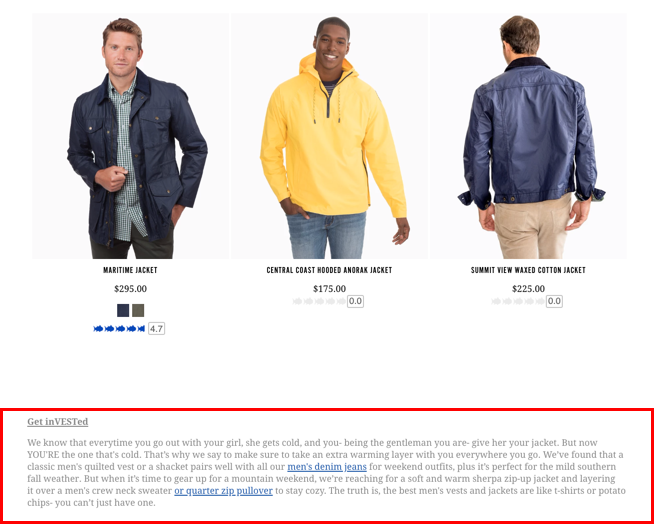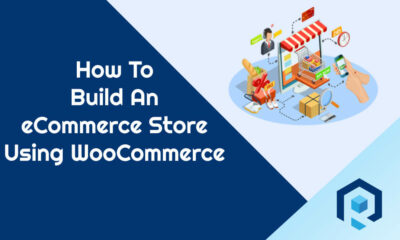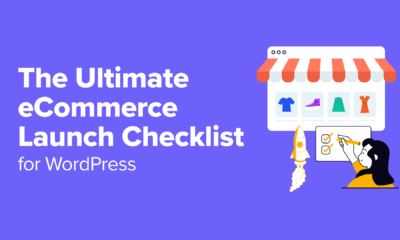MARKETING
Ecommerce SEO: Optimizing and Ranking Category Pages

As is the case with most eCommerce companies, category pages are among their most important destinations. Given their prominent status in the eCommerce website hierarchy, these high-priority pages often pull in searches for short-head, high-volume keywords.
However, this does not mean that they are automatically optimized for SERP rankings. In fact, the situation is quite the contrary.
In the world of eCommerce, search engine optimization is a preeminent strategy for scaling a business. This fact becomes evident when one realizes that 39 percent of all global traffic comes from search.
Right.
Given this information, it is critical to optimize category pages as these destinations naturally target many keywords that consumers search. That said, these pages tend to contain the least content, thereby making them difficult to optimize for some.
While optimizing product pages for SEO performance is also a critical task, it often overshadows category-level content, leaving a gaping hole in a brand’s search strategy.
Yet, by utilizing specific tactics, retailers can help to elevate these pages in the SERPs, thereby increasing their traffic and potentially earning more conversions overall.
Take a look at Southern Tide’s category pages for their jackets and vests:
Ready to get your content pages to top Google? Read on.
When establishing optimization strategies for category pages, it is essential to understand that consumers are far more likely to search category-like keywords rather than precise product names.
For instance, if shoppers are in the market for a new pair of headphones, they are likely to search terms like “wireless headphones” with the potential inclusion of a specific brand or retailer. This scenario is far more likely than consumers searching “Bose SoundSport Wireless In-Ear Headphones.”
Besides, more specific searches (such as the example mentioned above) are the job of product pages, not category pages.
Therefore, retailers should conduct keyword research that aligns with the products sold within a category or collection to understand the terms that buyers are searching and apply to the page in later steps. Moreover, when using the words on said pages, it is vital to only direct those keywords to the page that it relates to in order to avoid keyword cannibalization issues.
Look how many possible keywords are used in one of Refrigiwear’s category pages:
That said, when handling the research, sellers will have to go beyond short-head terms. While such keywords are undeniably crucial, the fact is that long-tail keywords still drive the majority of purchases as these phrases tend to show strong user intent and usually reside lower in the sales funnel.
When optimizing category pages, the natural starting point is its header tags. In the page’s H1, utilize the primary keyword that is likely to draw in customers. This is vital real estate as a page’s header helps search engines and users to understand what a destination is all about.
Unfortunately, this is where category search engine optimization effort usually ends for most merchants. One of the biggest problems that retailers face regarding their category pages is that they only show products.
While products are certainly the star of the show on such pages, category pages that are not designed to house content severely limit optimization opportunities.
Therefore, one of the easiest ways to help elevate a category page’s optimization potential is to build these destinations in a way that allows for content to be added. This content will usually take the form of a small block of introductory text.
With an introductory section, retailers can utilize various short-head and long-tail keywords that were determined to be valuable during the keyword research process. However, be sure that the copy flows smoothly, naturally and avoids any keyword stuffing. Failure to heed this warning could result in lower rankings within Google and other search engines.
For merchants who aren’t copywriting experts, it may be wise to partner with an eCommerce SEO company that can make the most out of this real estate.
Finally, within the text, merchants can include internal links to related subcategories, as well.
However, it should be noted that this space is not solely reserved for SEO purposes. Introductory text on category pages gives sellers an opportunity to show off their brand’s personality. After all, a distinct persona can help retailers move merchandise and cultivate customer loyalty.
For instance, shoe retailer Famous Footwear boasts on their men’s shoes category page:
“We’re the work boots you pull on every morning and the slippers you can’t wait to slide into at night. We’re the oxfords you wore on your second interview and the chukka boots you wore on your first date. We’re the men’s running shoes that helped push you to the finish line (all the training paid off!). We’re the basketball shoes you lace up when you shoot hoops with the guys and the sports shoes that help you chase your kids around the park.”
While this is only a snippet from the page’s much lengthier text, in this paragraph, the brand not only shows off its identity, but it also forms a connection with the customer with the continual usage of “we’re.” Moreover, the company also links to a variety of subcategories with anchor terms like “chukka boots,” “slippers,” “running shoes” and other relevant keywords.
That said, the links that merchants include on their category page need not be limited to those of other subcategories.
Content is the bedrock of all SEO efforts. With that in mind, it is possible to utilize such materials to elevate category pages in the SERPs.
Ames Walker does a fantastic job of putting content on their category pages:
While it is essential to devise an interlinking strategy as it relates to category, subcategory and product pages, employing content to achieve a deeper level of interlinking can be extremely valuable.
Given that category pages sit near the top of a site’s hierarchy, these destinations benefit more from internal linking than other, deeper pages. Therefore, retail sites can potentially earn greater visibility by using categories as pillars to create content around.
To achieve this, begin by asking what solutions are intrinsically tied to each category or collection. Moreover, establish what category-related information users would seek out during the awareness stage of the buyer’s journey. Brainstorm how to develop useful, valuable, educational or entertaining content related to each category.
Taking things to the next step, do the same for the consideration and decision phases as well. After uncovering some pain points and potential topics, it is wise to go back for another round of keyword research to build an effective eCommerce content marketing strategy.
The content itself should showcase the category of products and naturally weave category page links into the content as, from an SEO perspective, this is the core purpose of the materials. However, the links must be natural and actually useful in the context of the piece. Otherwise, these efforts will merely seem like product peddling.
When it comes to linking, it isn’t just internal links that are useful in enhancing a category page’s SERP performance.
As far as search engine ranking factors are concerned, backlinks are still one of the most heavily weighted components.
Therefore, eCommerce retailer’s content marketing efforts should not end with crafting on-site materials, but also extend to pitching articles and blogs that relate–and link to–category pages.
When a brand gets mentioned by other sites, those destinations tend to either link to the company’s homepage or a specific product page. This leaves a massive gap where category pages are concerned.
Take a look at this article about Tiege Hanley where they get linked to their site in the opening sentence:
Given this dynamic, merchants should work to make connections and pitch pieces that place category and subcategory pages at the center of the message while linking to the relevant destinations.
For instance, if sellers take the time to build truly memorable and unique category pages, they can pitch their creation story and lessons learned to a marketing company that is likely to publish a roundup post on great category pages. Moreover, merchants can even offer to pen the piece (so to speak), thereby giving themselves more creative control over the message and the included link(s) while also earning a byline.
In many ways, category pages are the heart of eCommerce websites. Therefore, retailers should pay considerable attention to how these destinations are structured and optimized for providing the best customer experience and SEO outcomes.
Given the amount of traffic that these pages can attract through the implementation of the tactics listed above, any seller who fails to utilize these pages to the fullest is doing their site a disservice.
Implement the strategies outlined here to help your site’s category pages climb the SERPs, generate more traffic and earn substantially more sales through their newfound visibility.


















